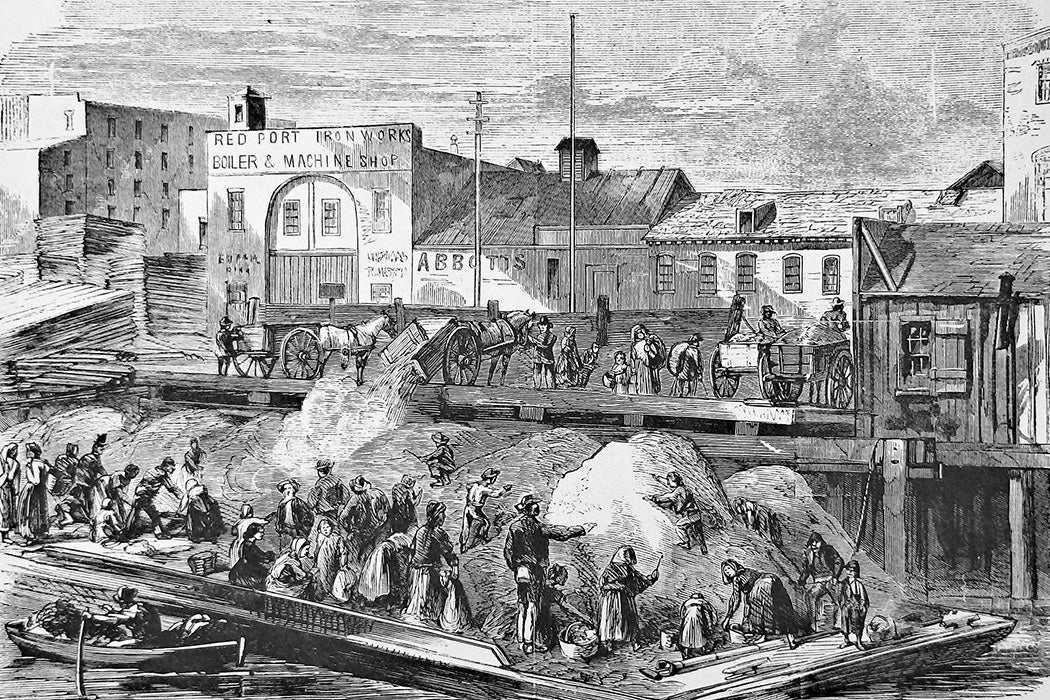Humans have been faced with the problem of garbage for as long as we’ve lived in permanent, densely populated settlements. Anthropologist Sarah Hill gives the example of the Neolithic city of Çatalhöyük, located in what’s now Turkey. There, people discarded their trash between homes, gradually building up a layer of waste that fused the buildings together and eventually became a sublayer on top of which later residents built their own homes.
“In this way, Çatalhöyük mounded up into one of the world’s first man-made landforms and became a stereotypic city on a hill,” Hill writes.
Many thousands of years later, the building of colonial cities in North America also took advantage of urban waste. Starting in Dutch colonial times, when New York was still New Amsterdam, authorities allowed the sale of “water lots”—property rights for land that didn’t yet exist in the waters around Manhattan—for 1/25th the price of land lots. The new owners created land, expanding the island outward, using whatever materials they could find. This included discarded ship ballast materials—often sand or coral from the Caribbean—and locally produced garbage. One 1796 account described how
carts were employed to collect such dirt and filth as all large populous cities furnish in abundance; and with materials of this description [it] was filled dup, and to give greater salubrity to the mass, there were occasionally added, dead horses, dogs, cats, hogs &. &.
A century later, Hill writes, Chicago employed its own waste for a different kind of urban improvement project: creating pleasant “country” landscapes inside the city. After the Great Chicago Fire, the city threw charred debris into marshes around Lake Michigan. Over the decades that followed, authorities deliberately dumped regular household waste into the swampland to form solid land for recreational uses. Progressive-era city planner Daniel Burnham envisioned the trash as the basis for “beautiful and extensive park strips along the entire shore, which will almost build themselves in the course of another generation.” And, indeed, the century-old trash now lies below a network of lakeside parks, bike paths, and beaches.
Chicago was just one of many US cities across the country that built trash into substrates for parks, highways, and bridge foundations in the early twentieth century. But, by the end of the century, the country had mostly adopted the model of the sanitary landfill. Hill writes that this kind of “mausoleum of waste” is designed to protect groundwater and air from pollutants under the strictures of environmental laws passed in the 1960s and ’70s. They’re normally located far from cities in places with cheap land. After a sanitary landfill is full, it gets capped and returned to a “natural” appearance.
Weekly Newsletter
Unlike the new urban “land” created from waste in the past, these strange hills, rising as much as 1,000 feet in the air, are mostly hidden from view, visible only as we speed by them on the nation’s highways far from the cities and towns where most of the garbage is created.
Support JSTOR Daily! Join our membership program on Patreon today.







